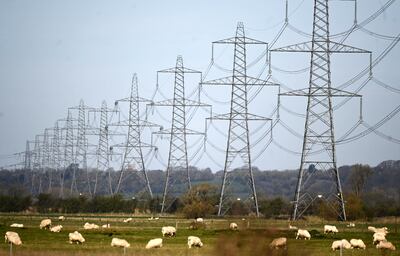The world might have as little as 20 minutes to prepare for a solar storm that could wreak havoc on power lines, experts warned on Tuesday.
Solar activity is expected to reach a peak in 2025, and energy grids on Earth may not be prepared.
Powerful bursts of energy from the Sun could cause physical damage or trigger magnetic storms that upset systems on the ground.
An official at the UK's Met Office responsible for predicting space weather admitted the state of long-range forecasting was “very poor”.
“We’re actually quite good at our short-term forecasts but what people really want is the longer-term forecasts which to a great degree are beyond our capabilities at the moment,” said Simon Machin, who manages the Met Office’s space weather programme.
Solar blasts can damage satellites, potentially disrupting broadcasting and navigation on Earth. A large solar flare affected air travel in the UK in 2003 and cut power in Sweden.
They are considered a medium-grade threat in the UK's national risk register but the last solar cycle passed without any major storms. A large flare narrowly missed the planet in 2012.
The sun’s 11-year cycle is now nearing its “solar maximum” again, making eruptions of energy more common. Nasa reported a powerful flare only last week.
Some solar flares contain a blast of radiation that can reach Earth at the speed of light.
“We can’t observe those and forecast their arrival because by the time we’ve seen them, of course, they’re already here,” said Mr Machin, but he added that said experts can instead try to measure their probability.
A huge eruption of plasma known as a coronal mass injection takes longer to reach the planet but can disturb its magnetic field.
Spacecraft positioned about 1.5 million kilometres from Earth, at a point known as Lagrange 1, can detect a storm as it nears the planet.
But Mr Machin, speaking to energy sector representatives at the Royal Meteorological Society, said forecasters “don't really know with much certainty” what the scale of impact will be until those last-minute measurements come in.
“For a fast-moving coronal mass injection, that might mean as little as 20 minutes’ or half an hour’s notice,” he said.

Mathew Hofton from electricity system operator National Grid ESO, said as many as 20 transformers could be damaged in a severe solar storm.
A one-in-50-year storm could bring power cuts and a once-in-a-century event could lead to parts of the network being disconnected for weeks, he said.
There are also risks to high-voltage interconnector cables that link the electricity grids of different countries.
Although a catastrophic hit taking years to recover from is considered implausible, there is a concern that the untested equipment could be caught out.
“The systems that we’ve been building over the last 15-20 years haven’t been tested in the face of a major geomagnetic storms,” said Mr Machin.
“We don’t really have a clear picture of what that looks like across the UK grid and control systems.”





